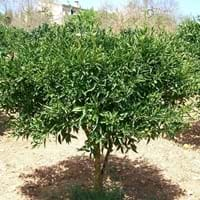Life Span
Perennial
Perennial
Type
Flowering Plants, Fruits, Trees
Fruit
Origin
Central America, Europe, North America
Southern Asia, India, Melanesia, Australia
Types
Not Available
etrog
Habitat
Hedge, Scrubs, Woods
Mediterranean region, Subtropical climates, Tropical regions
USDA Hardiness Zone
4-8
9-11
AHS Heat Zone
Not Available
12-9
Sunset Zone
Not Available
H1, H2, 8, 9, 12, 13, 14, 15, 16, 17, 18, 19, 20, 21, 22, 23, 24
Habit
Not Available
Oval or Rounded
Flower Color
White
White, Purple
Flower Color Modifier
Not Available
Bicolor
Fruit Color
Yellow
Yellow
Leaf Color in Spring
Dark Green
Green, Dark Green
Leaf Color in Summer
Green
Green, Dark Green
Leaf Color in Fall
Brown, Green, Light Yellow
Green, Dark Green
Leaf Color in Winter
Not Available
Light Green
Leaf Shape
Oblong
Ovate elongated
Plant Season
Summer
Spring, Summer, Fall, Winter
Sunlight
Full Sun, Partial shade
Full Sun, Partial Sun
Growth Rate
Medium
Medium
Type of Soil
Loamy
Clay, Loam, Sand
The pH of Soil
Neutral
Acidic, Neutral
Soil Drainage
Well drained
Well drained
Bloom Time
Fall, Summer
Early Spring, Spring, Winter, Late Winter, Indeterminate
Tolerances
Drought
Drought
Where to Plant?
Ground
Ground
How to Plant?
Grafting, Seedlings, Transplanting
Seedlings, Transplanting
Plant Maintenance
Medium
Medium
Watering Requirements
Medium
Needs less watering
In Summer
Lots of watering
Lots of watering
In Spring
Moderate
Moderate
In Winter
Average Water
Average Water
Soil pH
Neutral
Acidic, Neutral
Soil Type
Loamy
Clay, Loam, Sand
Soil Drainage Capacity
Well drained
Well drained
Sun Exposure
Full Sun, Partial shade
Full Sun, Partial Sun
Pruning
Prune when plant is dormant, Remove dead or diseased plant parts
Remove damaged leaves, Remove dead branches, Remove dead leaves
Fertilizers
All-Purpose Liquid Fertilizer
All-Purpose Liquid Fertilizer
Pests and Diseases
Aphids, Curculio occidentis, Japanese Beetles, Leaf Rollers, Leafminer, Mites, Red blotch, sawflies, Scale, Stink bugs
Aphids, Citrus foot rot, Leafminers, Red blotch
Plant Tolerance
Drought
Drought
Flower Petal Number
Single
Single
Fragrant Bark/Stem
No
Yes
Foliage Texture
Medium
Medium
Foliage Sheen
Matte
Glossy
Attracts
Not Available
Birds, Butterflies
Allergy
Digestive Problems, Respiratory problems
Mild Allergen
Aesthetic Uses
Showy Purposes
Showy Purposes
Beauty Benefits
Beautiful Skin
Brightens the skin complexion, Good for skin and hair
Environmental Uses
Food for birds
Air purification
Medicinal Uses
Anthelmintic, Antibacterial, Astringent, Hypnotic, Laxative, Refrigerant
Antibiotic, Antidote, Pulmonary afflictions, Recovering internal injuries
Part of Plant Used
Fruits
Fruits, Leaves
Other Uses
Edible syrup, Jam, Jelly, Used As Food
Used as a nutritious food item, Used As Food, Used for its medicinal properties
Used As Indoor Plant
No
No
Used As Outdoor Plant
Yes
Yes
Garden Design
Not Available
Container, Edible, Feature Plant, Fruit / Fruit Tree, Hedges, Houseplant, Shade Trees, Topiary / Bonsai / Espalier, Tropical
Botanical Name
Malus sylvestris
CITRUS medica
Common Name
European crab apple
Citron
In Hindi
european crab apple
नीबू
In German
Der Holzapfel, Europäischer Wildapfel
Zitrone
In French
Le Boquettier, le Pommier sauvage ou Pommier des bois
Citron
In Spanish
Malus sylvestris, el Manzano silvestre, manzano silvestre europeo
Cidra
In Greek
Ευρωπαϊκή μήλο καβουριών
Κίτρο
In Portuguese
Malus sylvestris
cidra
In Polish
Jabłoń dzika
Cytryna
In Latin
european crab apple
Chron
Phylum
Magnoliophyta
Magnoliophyta
Class
Magnoliopsida
Magnoliopsida
Clade
Angiosperms, Eudicots, Rosids
Angiosperms, Eudicots, Rosids
Tribe
Not Available
Citreae
Subfamily
Not Available
Aurantioideae
Number of Species
Not Available
Not Available
Season and Care of European Crab Apple and Citron
Season and care of European Crab Apple and Citron is important to know. While considering everything about European Crab Apple and Citron Care, growing season is an essential factor. European Crab Apple season is Summer and Citron season is Summer. The type of soil for European Crab Apple is Loamy and for Citron is Clay, Loam, Sand while the PH of soil for European Crab Apple is Neutral and for Citron is Acidic, Neutral.
European Crab Apple and Citron Physical Information
European Crab Apple and Citron physical information is very important for comparison. European Crab Apple height is 25.00 cm and width 20.00 cm whereas Citron height is 240.00 cm and width 180.00 cm. The color specification of European Crab Apple and Citron are as follows:
European Crab Apple flower color: White
European Crab Apple leaf color: Dark Green
Citron flower color: White and Purple
- Citron leaf color: Green and Dark Green
Care of European Crab Apple and Citron
Care of European Crab Apple and Citron include pruning, fertilizers, watering etc. European Crab Apple pruning is done Prune when plant is dormant and Remove dead or diseased plant parts and Citron pruning is done Remove damaged leaves, Remove dead branches and Remove dead leaves. In summer European Crab Apple needs Lots of watering and in winter, it needs Average Water. Whereas, in summer Citron needs Lots of watering and in winter, it needs Average Water.





